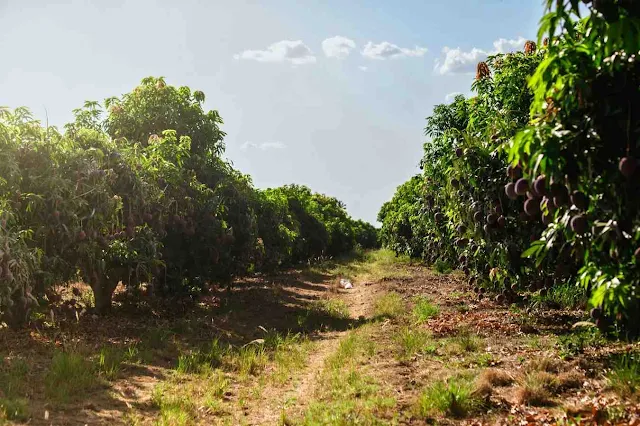The Uttarakhand Forest Department has created an ethnobotanical garden at Haldwani, spread across one acre, to highlight the ecological and environmental knowledge contained in the Mahabharata. The garden showcases 37 plant species mentioned in the epic.
 |
| (Representative Image) After Ramayan Vatika, Uttarakhand Creates Mahabharata-Themed Garden |
Read More: Prayagraj Mahakumbh 2025: Highlights Of The Spectacular Drone Show
Sanjeev Chaturvedi, the Chief Conservator of Forests, explained that the "Mahabharata Vatika" includes plant species referenced in 18 sections of the Mahabharata. The featured plants include Khair (Acacia catechu), Kovidar (Bauhinia variegata), Bargad (Ficus benghalensis), Peepal (Ficus religiosa), Dhak (Butea monosperma), Harsringar (Nyctanthes arbor-tristis), Baheda (Terminalia bellirica), Aam (Mangifera indica), and Kala Sirs (Albizia lebbeck).
Chaturvedi mentioned that the garden was created after extensive research, drawing on the Sanskrit names of the 37 species, their scientific names, and the number of shlokas (hymns) in which each plant is mentioned. The Mahabharata, believed to have been authored by the sage Vyasa, contains 100,000 shlokas and is divided into 18 sections.
He further emphasized that the garden serves as a testament to the ecological and environmental wisdom embedded in the epic. "The Mahabharata underscores the vital role of forests," he said. "The Vana Parva, or Book of the Forest, highlights the importance of trees, water bodies, wildlife conservation, and the role of light in sustaining plants."
Chaturvedi pointed out that the garden also connects religious teachings with environmental conservation. "The garden brings together religion and history with ecology. It reflects the teachings of Bhishma Pitamah, who, while lying on a bed of arrows, imparted valuable lessons about wildlife and plants to Yudhishthira. The Mahabharata also conveys the message of tiger conservation."
He referenced the Udyoga Parva, which states that without forests, tigers are killed, and without tigers, forests are destroyed. "This mutual relationship between tigers and forests is crucial to modern conservation practices," he noted.
Chaturvedi also mentioned the Anushasana Parva, where Bhishma tells Yudhishthira that planting trees is a noble act that benefits both ancestors and descendants. "The Mahabharata beautifully demonstrates the interconnectedness of nature, wildlife, and human values. The epic’s reference to the Shami tree (Prosopis cineraria) highlights its cultural and historical importance."
In the Mahabharata, the Pandavas hid Arjuna’s Gandiva bow and weapons on a Shami tree during their exile. On Vijayadashami, they retrieved the weapons, worshiped Goddess Durga, and honored the Shami tree. Today, people still exchange Shami leaves on Vijayadashami to wish each other prosperity and well-being.
Chaturvedi concluded by noting that the Mahabharata reveals an ancient understanding of the role of light in plant life, which modern science later identified as photosynthesis.
In addition to the Mahabharata Vatika, the Forest Department has also established the "Ramayana Vatika" in Haldwani, featuring plant species mentioned in Valmiki’s Ramayana and associated with Lord Rama across six major forest types. Of the 139 species referenced, around 70 have been cultivated in the garden. Chaturvedi explained that during Lord Rama’s journey from Ayodhya to Sri Lanka, he encountered four types of forests: Chitrakoot (tropical deciduous), Dandakarnanya (tropical deciduous), Panchavati (tropical dry deciduous), and Kishkindha (dry and moist deciduous). "Ashok Vatika, associated with Sita, is an evergreen forest, while Dronagiri, an alpine forest, is linked with Lord Hanuman," he added.



.jpg)

%20(1).jpg)

0 Comments
Do Share Your Views